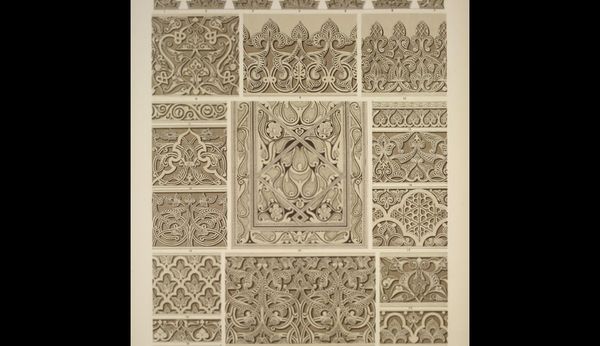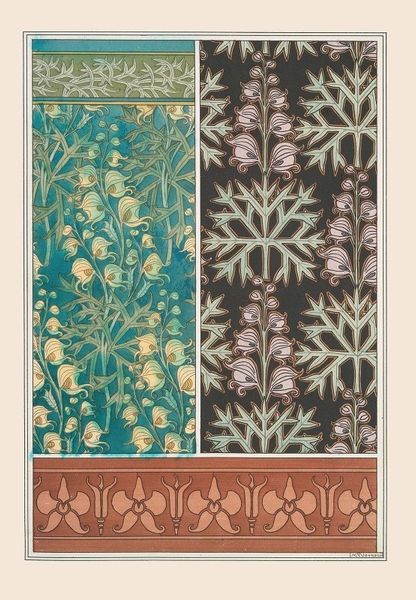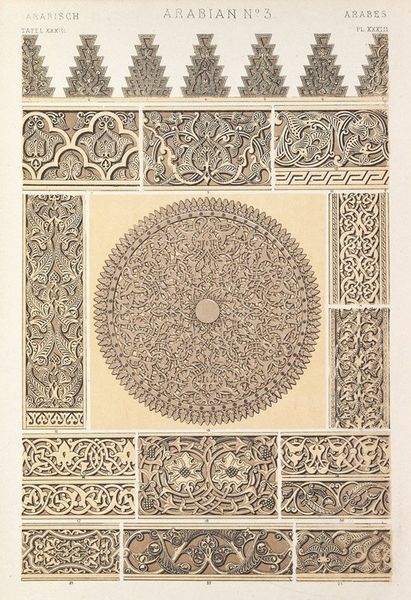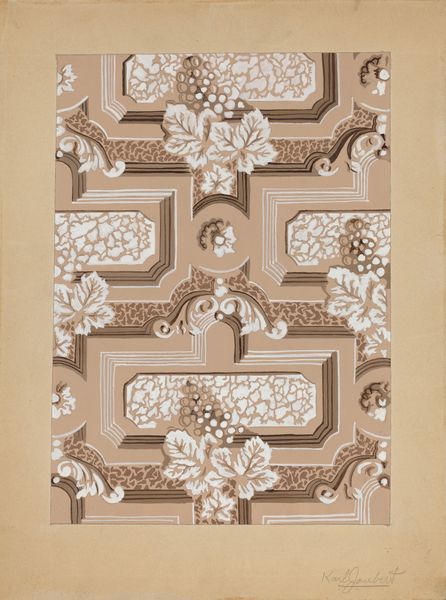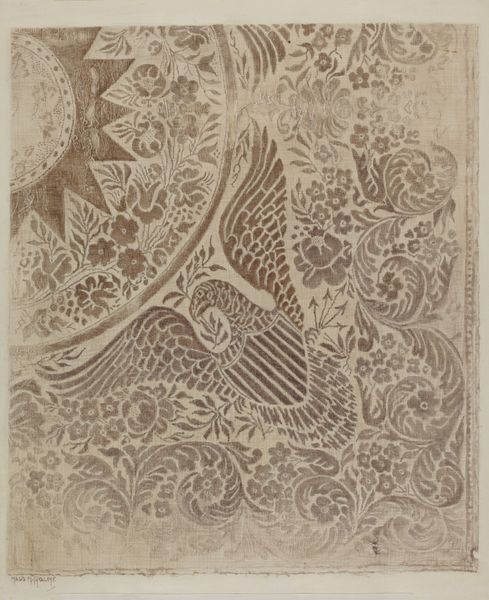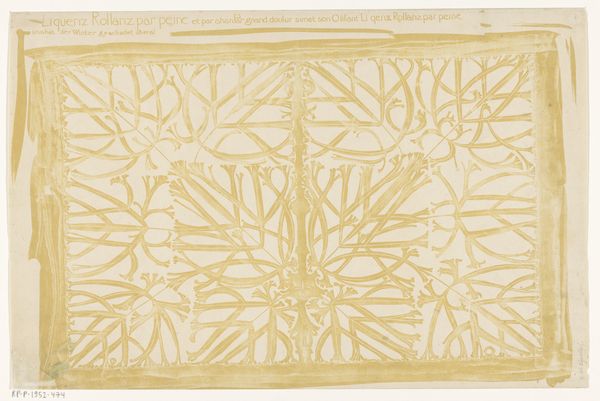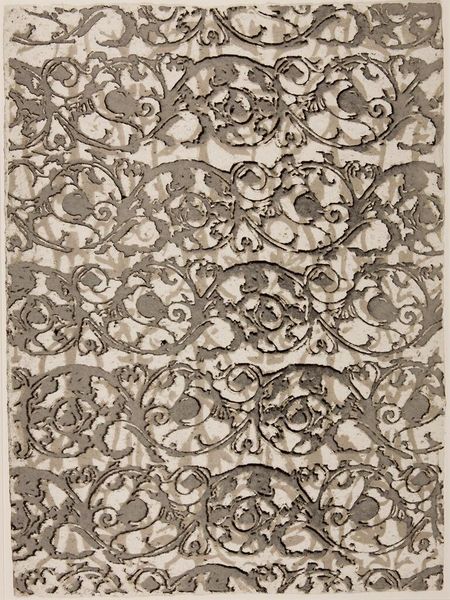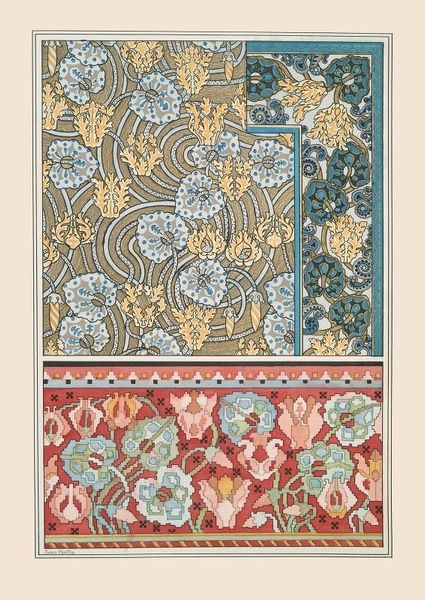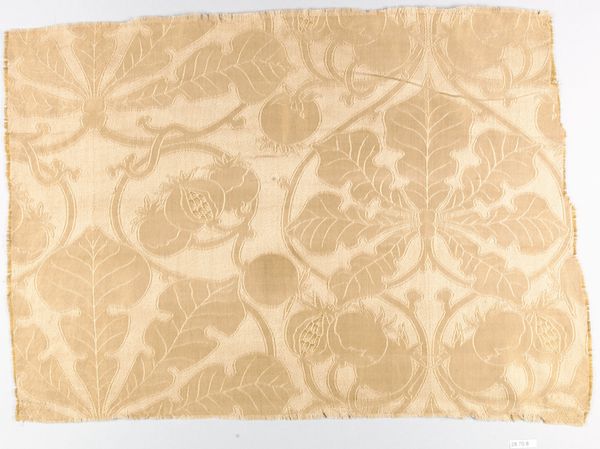
Coqs et poules, damassé; hippocampes et algues, dentelle; lézards et ronces, grille en bronze 1897
0:00
0:00
graphic-art, print, textile
#
graphic-art
#
art-nouveau
# print
#
textile
#
geometric pattern
#
organic pattern
#
textile design
#
decorative-art
Copyright: Public Domain: Artvee
Curator: Editor: So this is "Coqs et poules, damassé; hippocampes et algues, dentelle; lézards et ronces, grille en bronze" by Maurice Pillard Verneuil, from 1897. What strikes me immediately is the division into three distinct panels, each showcasing a different motif and technique, with a consistent beige palette holding them together. It almost looks like samples in a textile design catalog. What’s your take on it? Curator: It's a fascinating reflection of the Art Nouveau movement's preoccupation with nature and its ambition to integrate art into everyday life. Verneuil’s print provides a snapshot of the late 19th century – a period marked by both the rise of industrial production and a nostalgic return to handcrafted aesthetics. Notice how the animals, the rooster and hens, the seahorses, even the lizards, are highly stylized, flattened, almost like heraldic emblems. Does this give you any ideas about the role that art played at that time? Editor: It does make me think about how art was being democratized at that time, meant for mass production in a way. This wasn't fine art to hang in a salon; it was design intended for textiles and decorative objects. So the style had to be easily adapted, almost like modular units, to be applicable for industrial production methods. It is striking to observe that this print does not shy from portraying that aesthetic feature through these highly stylized elements! Curator: Exactly. Verneuil's work also underscores the blurred lines between art, craft, and industry in the late 19th century. His work, along with many of his Art Nouveau contemporaries, served as visual fodder to feed the ever growing industrialized decorative arts. So, considering how decorative and visually delightful this looks, what sort of political and social dynamics may have had space for a new way of looking at industrial products? Editor: It points to how this sort of style promoted mass consumption with the democratization of luxury. I mean, before the turn of the century, the ability to procure a decorative product like wallpaper or textiles was reserved to the privileged. Curator: Precisely. Seeing the work in that way encourages an understanding of how even aesthetic choices were deeply influenced by social, cultural, and industrial factors. It also suggests the powerful influence exerted by socio-economic considerations, a perspective not always front and center in the study of art history. Editor: Thanks! This really helped me think beyond the aesthetic and into the socioeconomic context of the piece!
Comments
No comments
Be the first to comment and join the conversation on the ultimate creative platform.



